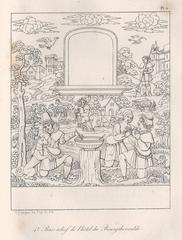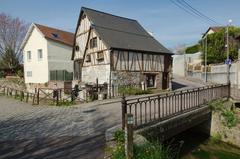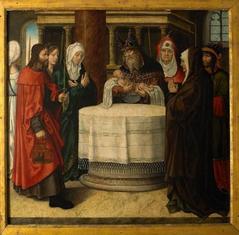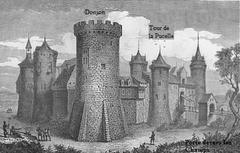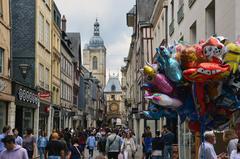
Rue Verte, Rouen, France: Visiting Hours, Tickets, and Historical Sites Guide
Date: 04/07/2025
Introduction
Rue Verte, nestled in the heart of Rouen, Normandy, is a vibrant street that weaves together layers of medieval history, striking architecture, and a lively local culture. Stretching from the Gare de Rouen-Rive-Droite train station toward the city center, Rue Verte is more than a thoroughfare—it’s a living testament to Rouen’s evolution through the centuries. This comprehensive guide offers everything you need to know for an enriching visit: from historical context and cultural highlights to practical tips, accessibility, and the best times to experience its unique atmosphere.
Table of Contents
- Historical Overview
- Cultural and Artistic Significance
- Visitor Information
- Practical Travel Tips
- Frequently Asked Questions (FAQ)
- Summary Table: Visitor Essentials
- Conclusion
- References
Historical Overview
Medieval Origins and Early Development
Rue Verte’s origins date to the Middle Ages, when Rouen emerged as a prosperous commercial and religious center in Normandy. The street—strategically positioned near the city’s defensive walls—became a favored residential and artisan hub for the burgeoning bourgeoisie (Intrepid Scout; Normandie Tourisme). Its name, “Green Street,” likely refers to the gardens and greenery once prevalent in the area.
By the 12th and 13th centuries, Rue Verte was integral to city life, connecting the center to northern suburbs and facilitating the flow of goods and people.
Architectural Heritage and Notable Residents
Rue Verte is renowned for its eclectic architectural styles. Medieval half-timbered Norman houses stand alongside Renaissance and 19th-century facades, reflecting Rouen’s urban evolution (The Modern Postcard). Of particular note is the home at number 29, once belonging to Ferdinand Marrou, a celebrated 19th-century ironworker. Marrou’s intricate ironwork and craftsmanship are visible throughout the city and especially on his former residence (Visiter Rouen).
Urban Expansion and Modernization
The arrival of the railway in 1847, with the establishment of Gare de Rouen-Rive-Droite, transformed Rue Verte into a gateway for travelers and commerce (Wikipedia). This period saw the growth of hotels, cafés, and shops, solidifying its status as a vital urban artery. Modernization continued with the paving of the street in 1867 and further expansions in the 20th century (Wikipedia).
Wartime Impact and Post-War Restoration
While Rouen endured significant damage during World War II, Rue Verte largely preserved its historic character (The Modern Postcard). Post-war efforts ensured the restoration and conservation of its most notable buildings, highlighting the city’s commitment to heritage preservation.
Cultural and Artistic Significance
Rue Verte is not only an architectural gem but also a center of artistic and cultural activity. Its proximity to Rouen’s iconic landmarks and its role in the city’s major festivals—like the Médiévales de Rouen and Joan of Arc Celebrations—make it a lively stage for artisans, performers, and local markets (Médiévales de Rouen; Joan of Arc Celebrations). The street’s atmosphere is especially vibrant during these events, with costumed parades, medieval markets, and street performances.
Jewish Heritage Context
Rue Verte is situated near significant sites of Rouen’s Jewish history, including the Sublime House beneath the Palais de Justice. Many guided tours incorporate Rue Verte into broader explorations of the city’s multicultural past (Visiter Rouen).
Visitor Information
Visiting Hours and Tickets
- Rue Verte Access: Open 24/7 as a public street.
- Shops, Cafés, and Attractions: Typically operate from 9:00 AM to 7:00 PM, with extended hours during festivals.
- Tickets: No fee to stroll Rue Verte. Guided tours, museum entries, and certain festival events may require tickets (Médiévales de Rouen).
Getting There and Accessibility
- By Train: Rue Verte begins at the Gare de Rouen-Rive-Droite, offering direct connections to Paris, Le Havre, and other destinations (Hikersbay).
- Public Transport: Several bus and tram lines serve the area (Moovit).
- On Foot or by Bike: The street and surrounding city center are pedestrian-friendly. Bike rentals are available near the station (The Crazy Tourist).
- Accessibility: Cobblestone surfaces may be challenging for some; most shops and cafés are accessible. The station is equipped with elevators and ramps.
Nearby Attractions
- Cathédrale Notre-Dame de Rouen: 5-minute walk
- Gros-Horloge (Great Clock): 7-minute walk
- Place du Vieux-Marché: 10-minute walk
- Musée des Beaux-Arts
- Jardin des Plantes: Short tram/bus ride
Dining, Shopping, and Amenities
- Cafés and Bistros: Enjoy Norman specialties like tarte normande, cider, and regional cheeses (Intrepid Scout).
- Shops and Artisan Boutiques: Local products include cheese, chocolate, and handcrafted goods. Festival markets offer unique souvenirs.
- Accommodations: Options range from boutique hotels to vacation rentals and budget stays. Book early during festivals (Normandie Lovers).
- Restrooms: Available at the train station and in major tourist areas.
- Luggage Storage: Facilities at the station for early arrivals or late departures.
Practical Travel Tips
- Best Time to Visit: Spring and early autumn for pleasant weather and fewer crowds; late May for festivals (Normandie Lovers).
- Weather: Temperate oceanic climate—pack an umbrella or raincoat (Hikersbay).
- Payments: Credit/debit cards widely accepted; carry some cash for markets.
- Safety: Rouen is generally safe; exercise typical caution in crowded areas.
- Language: French is primary, but English is spoken in most tourist locations.
- Etiquette: Service charge included in restaurants; tipping is appreciated but not required.
Frequently Asked Questions (FAQ)
Q: Is there an entry fee to visit Rue Verte?
A: No, Rue Verte is a public street and free to visit. Some nearby museums and festival events may require tickets.
Q: What are the typical opening hours for shops and cafés?
A: Most operate from 9:00 AM to 7:00 PM, with extended hours during festivals.
Q: How can I reach Rue Verte by public transport?
A: It starts at Rouen’s main train station, served by regional trains, buses, and trams.
Q: Is Rue Verte accessible for those with mobility challenges?
A: While the street is mostly accessible, cobblestones may be difficult for some. Assistance may be needed in certain areas.
Q: Are guided tours available?
A: Yes, guided and self-guided walking tours are offered by the Rouen Tourist Office and various local operators.
Q: Are there special events on Rue Verte?
A: Yes, especially during the Médiévales de Rouen and Joan of Arc Celebrations, with parades and street markets (Médiévales de Rouen; Joan of Arc Celebrations).
Summary Table: Visitor Essentials
| Aspect | Details |
|---|---|
| Location | Central Rouen, adjacent to the main train station |
| Accessibility | Pedestrian-friendly; close public transport; some cobblestones |
| Best Time to Visit | Spring, early autumn, or late May (festivals) |
| Dining | Cafés, bistros, specialty food shops |
| Shopping | Artisan boutiques, medieval markets during festivals |
| Events | Médiévales de Rouen, Joan of Arc Celebrations, food festivals |
| Accommodation | Boutique hotels, vacation rentals, budget options nearby |
| Safety | Generally safe; remain vigilant in crowds |
| Language | French (English spoken in tourist zones) |
| Weather | Mild summers, rainy autumns, cold winters |
Conclusion
Rue Verte is a must-visit destination for anyone exploring Rouen. Its rich blend of medieval architecture, artisanal heritage, and contemporary vibrancy offers a unique window into Normandy’s storied past and present. With free, year-round access, proximity to major landmarks, and an ever-changing calendar of festivals and events, Rue Verte promises memorable experiences for every traveler. Make the most of your visit by exploring interactive tours, engaging with local artisans, and savoring the street’s dynamic atmosphere.
For up-to-date event schedules, self-guided itineraries, and exclusive offers, download the Audiala app. Stay connected with the latest news and community stories by following Rouen’s tourism channels on Facebook, Instagram, and Twitter.
References
- Exploring Rue Verte in Rouen: Visiting Hours, Tickets, and Historical Sites Guide, 2024, Visiter Rouen (Visiter Rouen)
- A Day in Rouen: France’s Medieval Treasure in the Heart of Normandy, 2023, The Modern Postcard (The Modern Postcard)
- Rue Verte (Rouen) Historical Development and Urban Significance, 2024, Wikipedia (Wikipedia)
- DIY Walking Tour of Rouen, 2024, Intrepid Scout (Intrepid Scout)
- Things to Do in Rouen: Cultural Events and Festivals, 2024, Médiévales de Rouen (Médiévales de Rouen)
- Joan of Arc Celebrations in Rouen, 2024, Visiter Rouen (Joan of Arc Celebrations)
- Unmissable Sites in Rouen, 2024, Normandie Tourisme (Normandie Tourisme)
- Practical Travel Information for Rouen, 2024, Hikersbay (Hikersbay)
- Getting Around Rouen: Public Transport and Accessibility, 2024, Moovit (Moovit)
- Visit Rouen: Complete Guide and Itinerary, 2024, Normandie Lovers (Normandie Lovers)

